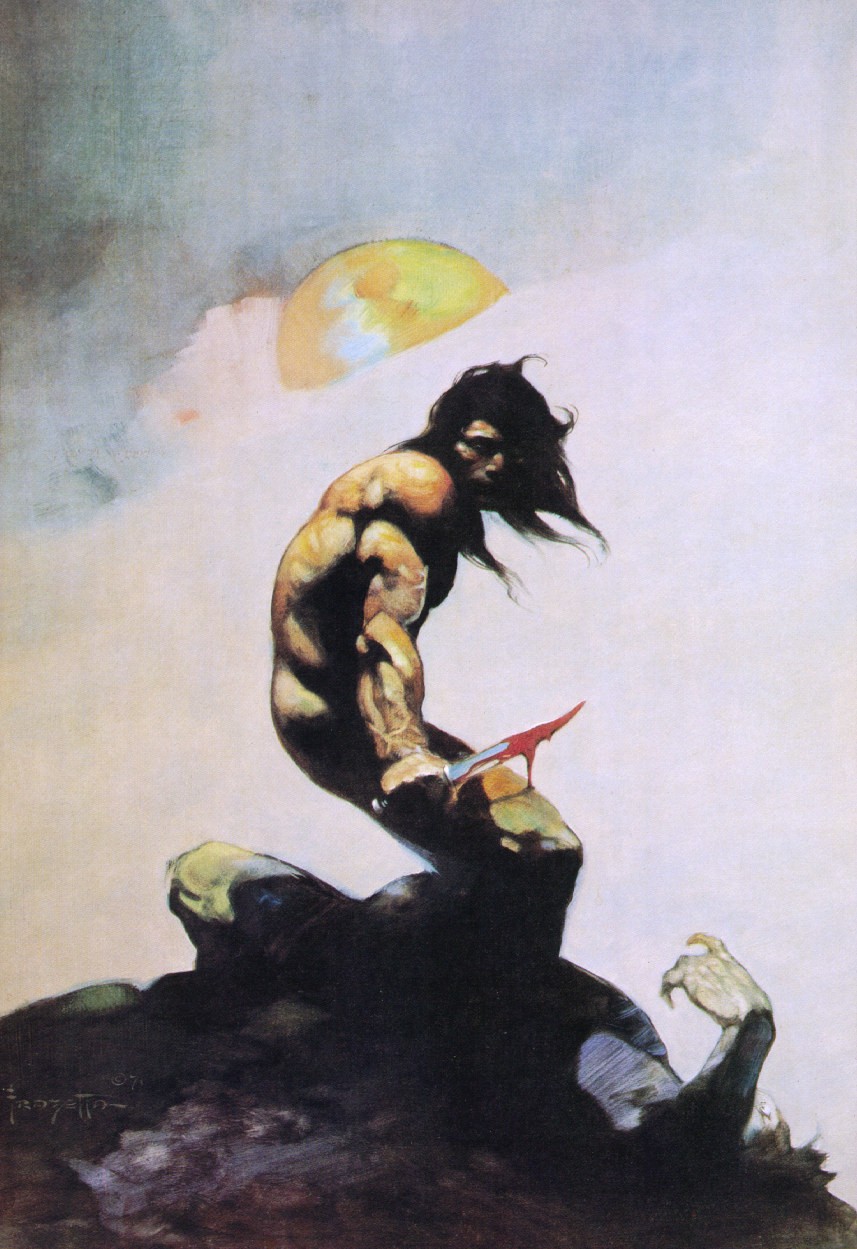A friend (Faylor's player) had just finished J.R.R. Tolkien's The Two Towers and expressed that the reason the book is so fulfilling is because it satisfies a desire for both "high" and "low level" adventure. I thought for a while about what he meant -- the more I did, the more I agreed with him.
Whenever I witness a particularly mighty character in fiction my first question always is, 'how did he/she get that way?' In one chapter of The Two Towers readers witness powerful heroes capable of dreadful slaughter. But the reader witnesses the separate and pitiable trudge of the remaining fellowship in the very next chapter. But most interesting to me, is the transition or 'leveling' the hobbits undergo.
I've been thinking about how Tolkien's telling of Sam's battle against Shelob informed the original designs of Gygax and Arneson. The hobbits are 'low level' in comparison to the rest of the fellowship. As such they must rely more on guile than force to accomplish their goals. Sneaking past a few orcs is a feat, but slaying a monster as vile as Shelob is an altogether more epic challenge. Such would take much grit and careful cunning.Perhaps this is why 'magic items' have become such a staple in most iterations of the classic game. The 'Phial of Galadriel' as well as the elven forged 'Sting' are essential to Sam's survival against the psuedo-mythic spider-demon, Shelob. Even a hobbit of Sam's resolve couldn't survive against such a threat without the aid of supernatural means. And though victorious, the battle left Sam exhausted to his absolute capacity in enemy territory.
Both in DnD and LotR, magic items don't substitute hard-won experience. But they do provide the necessary edge to perhaps offer survival in an otherwise impossible encounter. Because all low level encounters are potentially lethal, every decision must be made with the absolute strategic proficiency to prevent untimely character deaths.
Because magic is limited in LotR as it is in DnD -- low level players/ characters are desperate for creative solutions. Sam's seemingly counter-intuitive assault from beneath was just the unexpected strategy he needed to wound the beast. In all likelihood Sam would have been killed had he not eventually driven the beast away with the elvish phial's light.
Oddly the turning of Shelob seemed akin to the DnD cleric's 'turn undead' ability. And yet arguably Sam's first strike is comparable to a thief's 'sneak attack.' Of course, as treasure equates experience, perhaps it's not quite fair to rate Sam and Frodo as low level.
Indeed both have remarkable elvish gifts as well as the Ring of Power. But even if Tolkien's texts dont seamlessly translate into the DnD experience, the influence is sufficient enough that I personally enjoy 'low level' DnD more than the advanced levels. For me, low level character-growth is more palpable and satisfying.



















